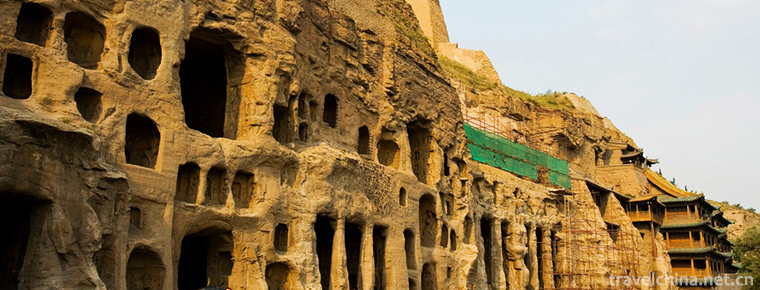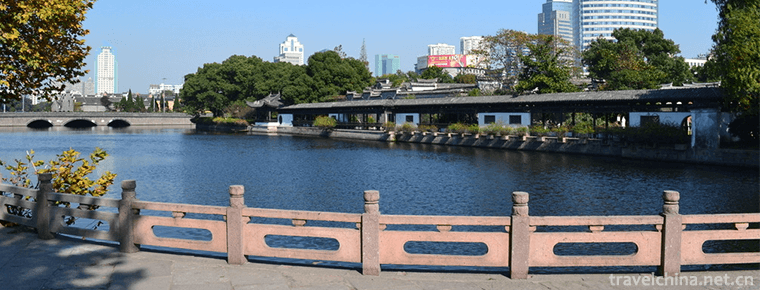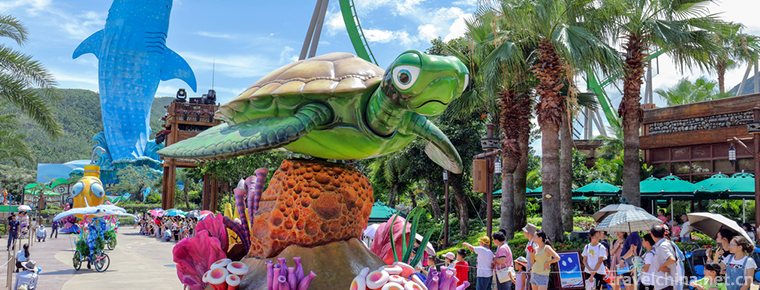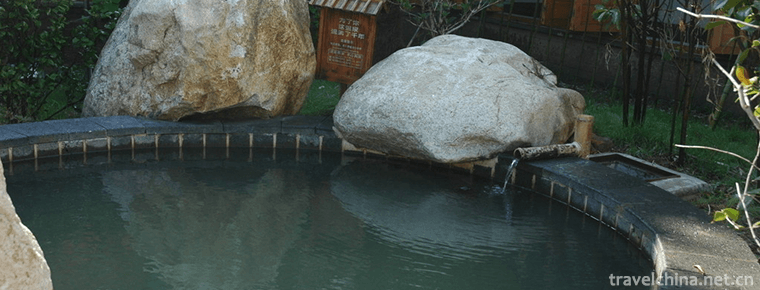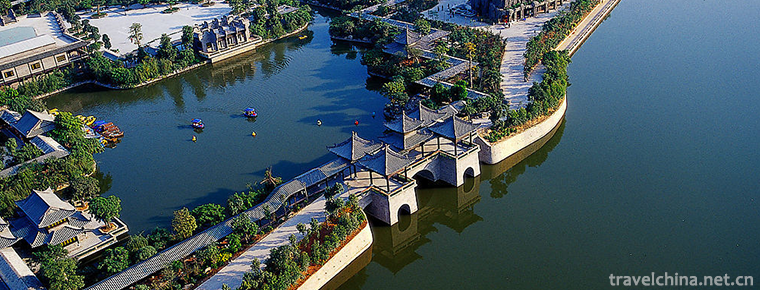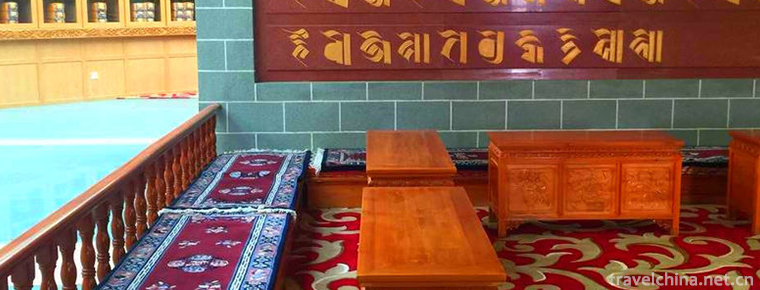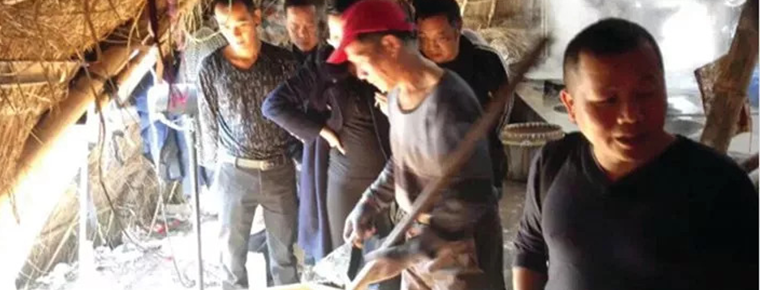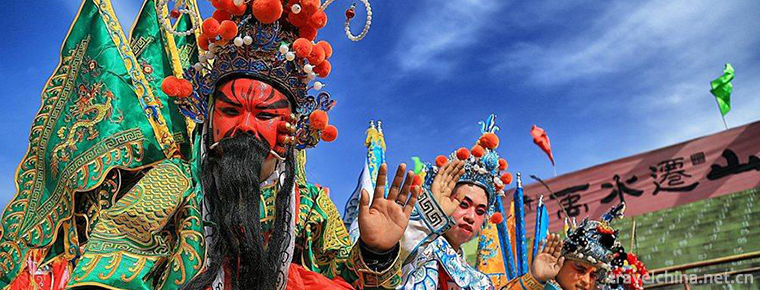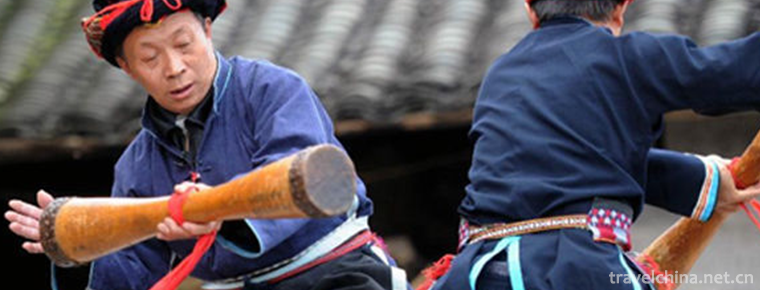Mount Emei Jinding
Mount Emei Jinding
Mt. Emei Jinding, also known as Huazang temple, is located on the main peak of Emei Mountain in Sichuan Province, China (29.52567 ° n, 103.336802 ° E), with an altitude of 3077 m. It is the end point of Emei Mountain tour and one of the key Buddhist temples in the Han area.
Mount Emei Jinding was first built in the Tang Dynasty, and its roof was covered by tin tiles. It was also called "Yinding" in Yuan Dynasty. There is woyun nunnery on the side of the temple, with dining hall and guest rooms for tourists. In Jinding, you can watch the four wonders of Emei: sunrise, sea of clouds, Buddha light and holy lamp. Jinding is adjacent to the thousand Buddha top and the ten thousand Buddha top. There are also buildings on the ten thousand Buddha top, and there are sightseeing Cableways connecting the Jinding and the hall of introduction.
The Golden Summit of Mount Emei is the most concentrated place in Mount Emei temples and scenic spots. In 1983, it was listed as a national key Buddhist temple.
Basic introduction
The Golden Summit of Emei is adjacent to the ten thousand Buddha summit of Emei peak, with an altitude of 3079 meters. Here, the mountain is high and the clouds are low, and the scenery is magnificent. Visitors can enjoy the sunrise, cloud sea and Buddha light by the steep sacrificial rock. After the Wenchuan earthquake on May 12, 2008, the altitude increased by about two meters from the original 3077 meters.
Emei essence
Jinding is the most concentrated place in Mount Emei temples and scenic spots. The highest 26 meters, the total area of 1614 square meters of gold top and the copper hall each, and the first mountain Pavilion "copper Pavilion", for Emei essence. In 1983, it was listed as a key Buddhist area in China. Mt. Emei Jinding and No. 1 pavilion are designed and built by Hangzhou Jinxing Copper Group Co., Ltd. led by Chinese copper craftsman Zhu Bingren.
geographical position
Mount Emei is known as the most magical place in the world.
30 degrees north latitude, the most mysterious area on earth, has countless mysteries. The Sichuan Basin in China, which is famous for its "land of abundance", is an area in the world where ancient civilization originated at 30 degrees north latitude and has not been desertified. Emei Mountain, located at 30 degrees north latitude, southwest of Sichuan Basin, is named after the two mountains facing each other and shaped like moths. Its three peaks stand, cliffs facing the sky, the 3077 meter Golden Summit has been known as the ladder of heaven.
Emei Mountain is located in the upper reaches of the Yangtze River, standing between Dadu River and Qingyi River. It has deposited Bashu culture bred by the rolling Yangtze River. It has been a natural and cultural heritage place in the upper reaches of the Yangtze River for thousands of years. During the vicissitudes of thousands of years, Emei Mountain has collected the spirit of heaven and earth, and created a paradise of more than 1000 kinds of medicinal plants, 3000 kinds of higher plants and 2300 kinds of animals. It is an ideal place for practitioners to practice. As early as 5000 years ago, Emperor Xuanyuan, the ancestor of China, came to Mount Emei twice to ask questions. More than 1000 years ago, the naive emperor talked about Mount Emei, which is the origin of Taoism in Mount Emei. Before 1900, after a practitioner built the first Buddhist monastery in the Yangtze River Valley on Mount Emei, Mount Emei became the birthplace of Buddhism in the Yangtze River Basin and was listed as one of the four famous Buddhist mountains in China. Emei Mountain is still flowing in the blood of the source of Taoism, the beginning of Buddhism and the realm of Confucianism. It embodies the philosophy of life and the wisdom of life elegantly and calmly.
Name source
The earliest building in Jinding is the Puguang hall in the Eastern Han Dynasty, which was changed into Guangxiang temple in Tang and Song Dynasties, and rebuilt by Baotan monk in Hongwu Period of Ming Dynasty. The Xiwa and Tongwa halls were built by biezhuan monks in the Ming Dynasty. Jinding golden hall is a copper hall built by Miaofeng Zen master in Wanli period of the Ming Dynasty. Emperor Zhu Yijun of Wanli named it "Yongming Huazang Temple". The name of Jinding comes from "Jindian". According to relevant records, the golden hall is two feet four feet five inches high, one meter three feet five inches wide, and one meter three feet five inches deep. The walls of tile columns, doors and windows are all made of bronze mixed with gold. There are statues of Bodhisattvas and thousands of small Buddhas beside them. The door walls are carved with exquisite craftsmanship. When the morning sun shines on the top of the mountain, the golden hall is shining in the sunshine, dazzling and spectacular, so people call it "Golden Summit". Unfortunately, during the Daoguang period of the Qing Dynasty, due to a fire, the Golden Hall collapsed, leaving only a bronze tablet. On the one hand, there is a record of the new copper Hall of Yongming Huazang temple in da'e mountain, which was written by Wang Weizong and combined with Wang Xizhi's words. On the other hand, the Golden Hall of Emei Mountain written by Fu guangzhai with Chu suiliang's words. In the existing Huazang temple, there are also several windows of the original golden hall. From these relics, we can imagine how magnificent the golden palace was.
After the bronze hall was destroyed, Xinqi monk built a brick hall on the original site during the reign of Guangxu. On April 8, 1972, the fire broke out again, and the whole Huazang temple was reduced to ashes again. In 1986, the state allocated 2.6 million yuan to rebuild the Huazang temple, which was completed on September 11, 1990. Today, the Huazang temple is larger than the original Huazang temple, with high construction quality, flying in the attic, worshipping magnificence, and towering in the sky.
Detailed introduction
Fire disaster
In the past, there were 548 temples and squatters in Jinding, which could accommodate thousands of people to eat at the same time. After the founding of the people's Republic of China, the state provided funds for maintenance. Ten years of turmoil, however, has seriously damaged it. What is more serious is that the relevant units occupying Jinding used the wooden temple as a diesel generator room. On April 8, 1972, a fire broke out. The ruthless fire destroyed Jinding and Huazang temples. The fire destroyed 2 bronze doors, 7 walls, 1 stele, 2 towers, numerous furnaces, bottles and mirrors; 8972 Ivory Buddha, Xilin lamp, sand feeding Buddhist scriptures, and ancient celebrity calligraphy and painting were burned to death.
In particular, there are only two copies of "Beilong Tibetan scripture" in China, while this one in Jinding temple is the most complete, with 7600 copies (woodcut version), which was burned to ashes by the fire. The person responsible for the accident is punished by law. After the fire, governments at all levels attached great importance to the reconstruction of the Huazang temple in Jinding. Premier Zhou Enlai had asked about this matter many times before his death.
Jinding rebuilt
Since 1986, the people's Government of Sichuan Province has allocated a special fund of 3.5 million yuan for renovation. In August of the same year, the construction was started. After four years of intensive construction, it was completed in 1989 and handed over to Emei Buddhist Association. The newly-built Jinding Huazang temple covers an area of more than 1690 square meters. The whole building is composed of high, medium and low-rise buildings, which are divided into Jindian Hall (Puxian Hall), Daxiong hall, Maitreya hall, ancestral hall, Abbot's room, Zen hall and squatter room. The layout is reasonable, with red walls and yellow tiles, white jade railings and marble floor, basically maintaining the original pattern. The plaque on the main gate of Huazang temple is written by Chairman Zhao Puchu. On September 11, 1990, more than 200 eminent monks and more than 1000 people from all walks of life gathered at home and abroad to solemnly hold the inauguration ceremony and Kaiguang Dharma meeting. The newly built Huazang temple is majestic and magnificent, standing on the top of Mount Emei's Golden Summit at an altitude of 3077 meters, which makes Mount Emei more beautiful. The rebuilt Huazang Temple adopts reinforced concrete frame structure and stone brick mixed structure, and is equipped with fire prevention, lightning protection, water storage and drainage facilities.
Main play items
Jinding copper Hall
At the top of Jinding, there is a rare treasure called "Jinding copper hall", which was donated by master Miaofeng to Lu'an, the vassal king of Western Shu, in 1602, the 30th year of the Wanli reign of the Ming Dynasty. The hall is 8 meters high, 4.8 meters wide and 4.3 meters deep. The upper part of the hall is carved with double eaves, with embroidered Brown lock windows. The whole body is welded with copper pieces. Roof eaves tiles run gold, in the sunlight, glittering, shining a hundred miles, known as Jinding. There are 24 bronze Buddha statues on both sides of the hall, ranking second only to Wannian temple. The door fangs are engraved with "cloud stack sword Pavilion" and "complete picture of Emei Mountain Road", with scriptures and Buddha statues engraved on the copper walls around it. There are also bronze towers and steles outside the bronze hall. Interestingly, the gates of most temples are facing south, but Emei Mountain faces east, and the copper hall in Jinding faces west, which can be regarded as the unique feature of Emei Mountain. It is said that in the past, believers from Tibet only worshipped Jinding, because Sakyamuni's hometown was in the western regions. Unfortunately, the hall was burned down in the Qing Dynasty.
Huazang Temple
The Huazang temple in Jinding is built on the mountain, with three halls distributed from low to high on the central axis. The first hall is Maitreya hall. On the door of the hall is hung a gold plaque of "Huazang Temple" inscribed by Mr. Zhao Puchu. On both sides are horizontal plaques of "Wande solemnity" (title of master jueguang) and "solemnity of wish sea" (title of master Zhumo). The bronze statue of Maitreya is worshipped in the temple, with a height of 2.9 meters and a bronze statue of Wei Tuo behind, with a height of 2.6 meters. There are also tripod bronze tripod and bronze stele in Wanli period of Ming Dynasty.
Maitreya hall on both sides of the hall is the guest hall, and there are corridors connecting the main hall along the mountain, forming a four in one patio. In the middle of the courtyard is a copper tripod, 5 meters high, and an iron tripod is placed around it, 1.6 meters to 1.7 meters high.
In the middle of the gate of the main hall of Mahavira is a plaque with gold lettered on a black background. On both sides, there are such plaques as "King's holy land", "Lingshan Huihui", "silver world" and "Fanyu Chongguang", which were presented by Longlian, Kuanlin and Zhenchan in 1990. In the hall, there is a three body Buddha with bronze body and a height of 3 meters. There are also Buddhist relics such as bronze pan, bronze bell and so on.
The highest level is the hall of universal wisdom, namely the golden hall and the Golden Summit, which is the highest hall in Mount Emei. There are inscriptions on the plaque at the gate of the hall, such as "Jinding", "endless wish", "universal wisdom, solemn" and so on. On both sides of the hall gate are couplets inscribed by Master Sheng Yi of Baolian temple, Hong Kong
The eldest son of Huazang, seven places and nine associations, assisted Pilu to expound the great religion;
Jinding real person, all over the world, come and go.
——(Hong Kong) antithetical couplet of master Shengyi's Puxian Hall
In the hall, there are bronze statues of Pu Xian riding on an elephant. Pu Xian sits on the lotus platform with Ruyi in his hand. The lotus platform is placed on the back of the elephant, and the white elephant pedals four lotus flowers. The whole statue was cast in copper with a height of 4.5 meters. There are also bronze tripods and other objects in the hall.
Climbing the Golden Summit is the greatest wish of all the pilgrims to visit Emei and worship the sages. Here, people can not only burn incense to worship Buddha, linger in the world of God, but also enjoy the magical landscape of nature: sunrise, sea of clouds, Buddha light and magic lamp.
Jinding Huazang temple is more than 3000 meters above sea level. The climate is very cold. The monks living here have to overcome many difficulties in life and climate. Since the reconstruction of Jinding, the monks have lived here all year round, carefully guarding the Buddhist temple, maintaining it year by year, creating conditions, and warmly receiving people from all walks of life at home and abroad, making contributions to the construction of Emei Buddhist temple and the development of Emei Mountain tourism.
In 2002, in response to the call of Sichuan Provincial People's government to build Mount Emei into "China's first mountain", Emei Buddhist Association re planned and formulated the plan of "restoration of Huazang Temple". In line with the principle of promoting Emei Buddhism, excavating historical and cultural relics and revitalizing tourism, we should do a good job in scientific planning and create a people-oriented harmonious society. The relocation of "703 TV station", the demolition of the former front of Huazang temple and the renovation of the environment were undertaken by Emeishan Buddhist Association. A 48 meter high bronze statue of "ten wise sages" was built to restore the former solemnity of Huazang Temple (Jinding). The construction project was started in August 2004 and completed by the end of 2005. On June 18, 2006, with the approval of the government, a grand and solemn ceremony was held for the completion of the Huazang temple and the opening ceremony of the ten sages.
Cliff wonders
To the east of woyundi in Jinding, there is a cliff with a height of more than 600 meters, which is very dangerous and magnificent. It is the largest rock in the whole mountain, and it is named Sheshen Cliff (also named after many cliff jumping events). Because of this, we can see "Buddha light" and "Buddha lamp", so it is also called "seeing light platform". Every time the sky is high and the clouds are light, the jade is clear. Standing on the platform of seeing light, you can see the sky and the earth. The peaks are at your feet. Beyond these mountains, seas and waves, there is no limit. In the East, the Emei River, Qingyi River, Dadu River and Minjiang River are zigzag, and the Chengdu Kunming railway runs through the north and South; in the north, the hills and hills are winding and directly adjacent to the Chengdu Plain; in the south, there are mountains and peaks of Liangshan and Xiaoliang mountains; in the west, the peaks of the Qinghai Tibet Plateau are covered with snow. The mountains and rivers are picturesque, and the earth is beautiful. What's more, it's a wonderful place to watch the sunrise, see the sea of clouds, enjoy the sacred lamp and see the light of Buddha.
Practical information
admission ticket
No tickets required
Emei Mountain scenic spot ticket already included.
Jinding cableway
Peak season: up 65 yuan / person, down 55 yuan / person, off season: up 30 yuan / person, down 20 yuan / person
Opening Hours
Summer and autumn (may 1-October 7) 6:00-18:30
7:00-17:30 in winter and spring (October 8-april 30)
Food information
The "Jinding Tianyan" happy family photo presented by the food forest of Jinding hotel in Emei Mountain is mainly composed of "ten thousand Buddha Chaozong", "woyun floating boat", "jieyinfeihong", "danyan ningcui", "Danwen Buddhist language", "qihuapujing" and "zhanmei MAIYUE". It is not only an attractive food, but also full of artistic charm. It is a visual and aesthetic experience Three dimensional feast of taste buds.
Accommodation information
If you want to see the sunrise in Jinding, you need to stay in Jinding. There are many hotels in Jinding to provide accommodation. Jinding xianghuaili hotel in Emeishan is located in Jinding. It is recommended to book in advance when you go to Jinding in peak season. Dining can be in the "gourmet forest" in Jinding, the price is not expensive, two people three dishes a soup about 100 yuan. You can also stay in taiziping. There are many places to stay, and it is two hours away from Jinding at most.
Traffic information
From the Baoguosi passenger transport center at the foot of Emei Mountain, you can take a bus to leidongping passenger station, then walk from leidongping to jieyindian, and then take the Jinding cableway to Jinding, which costs 65 yuan up and 55 yuan down; during the off-season, the cableway goes up 30 yuan and down 20 yuan. You can also choose to walk from the introduction hall to Jinding, but it is dangerous and takes about 2 hours.
1. Take bus No.5 (to Fuhu Temple) to enter Mount Emei Scenic spot;
2. The shuttle bus from Chengdu Xinnanmen passenger transport center to Emei Mountain starts from 7:20-19:20 every day. The bus will leave when the bus is full, and the fare is about 43 yuan / person;
3. After entering the scenic area, you can take Jinding cableway or walk to Jinding from Jieyin hall, about 6 km from Jinding hall to Jinding.
details
Play features
There are several wonders in Mount Emei's Golden Summit
Spectacle 1: the Golden Buddha, with a height of 48 meters (representing the 48 wishes of Amitabha), is the highest Golden Buddha in the world and the center of Emei's Golden Summit. The ten portraits of Pu Xian are divided into three layers with different expressions, which represent the ten mentality of the world. On the elephant's back, the first layer is the four heads and two sides of the Bodhisattva, the second layer is the four heads of the Bodhisattva, and the highest layer is the head of the front and rear Bodhisattvas. Inside the statue, there is a 484 square meter central hall for worshiping Amitabha Buddha, surrounded by white marble sculptures. The golden statue of sages will awe every tourist without any suspense and produce a kind of awe from the heart.
Spectacle 2: the Golden Hall refers to a hall in the golden roof Huazang temple with gilded roof, which is the largest Golden Hall in China.
Spectacle 3: Buddha light Emei Buddha light, also known as Emei treasure light, is a peculiar natural physical phenomenon. It is a good place to enjoy the Buddha's light in Jinding of Mount Emei. However, not everyone is lucky to see the Buddha light. In summer and early winter, the Buddha light appears most frequently. So it sounds like it is really a matter of luck and character to see Buddha light in Emei Mountain.
The best viewing time is from 9:00 to 10:00 and from 15:00 to 16:00.
Spectacle 4: Sunrise Jinding is the best place to see the sunrise of Mount Emei. Especially in winter, the sunrise often appears with the sea of clouds, which is extremely magnificent, which is not available in other seasons. To watch the sunrise in Jinding, you need to live in Jinding one night in advance and get up early the next day to watch the sunrise.
Sunrise viewing time: with the change of seasons, the sunrise time is also different. In winter, it is usually at 6:: 5-7:00. Warm tips: in winter to see sunrise, we must pay attention to heat preservation, the wind is strong on the mountain, sometimes the temperature is as low as 10 degrees below zero. The camera should also pay attention to heat preservation.
Spectacle 5: cloud sea winter is the season in which the Emei cloud sea is most easily seen in the four seasons of the year. Especially in the evening, the floating sea of clouds is magnificent, like a calm white sea. The rolling white fog gradually turns into gold and illusory against the background of the sunset. In the distance, Gongga Mountain and Wawu mountain are presented in golden silhouette, like a fairy mountain island floating in the water, which has an indescribable beauty. I believe that all the tourists who have witnessed this scenery will have a feeling that this trip is worthwhile. The best time to watch the sea of clouds is from 9:00 to 10:00 and from 15:00 to 17:30.

-
Yungang Grottoes
Yungang Grottoes is located in the southern foot of Wuzhou Mountain, 17 kilometers west of Datong City, Shanxi Province, northern China..
Views: 243 Time 2018-11-24 -
Tianyi Pavilion and Yuehu Lake Scenic Area
Tianyi Pavilion is located in Haishu District, Ningbo City, Zhejiang Province. It was built in the middle of Ming Dynasty. It was presided over by Fan Qin.
Views: 129 Time 2018-12-07 -
Guan Tang hot spring
Guantang Hot Spring is located in Tangtou Town, Linyi City, Shandong Province, on the East Bank of Yihe River. The hot spring covers an area of nearly 260 Mu and has a construction area of 100,000 squ.
Views: 192 Time 2019-01-13 -
Yuehui Garden Scenic Spot
Yuehui Garden is a large private garden located in Dongguan, Guangdong Province. It is the representative of Lingnan Garden. There are 108 garden attractions such as buildings.
Views: 131 Time 2019-03-09 -
Tibetan Medicine
Tibetan medicine is a bright pearl in the treasure house of Chinese medicine. The Tibetan people living in the snow-covered plateau for generations have accumulated .
Views: 133 Time 2019-04-05 -
Traditional Sugar making Techniques
In the memory of many Wenzhou people, when they were young, they were short of doctors and medicines, but the old people had many earthen prescriptions which were very useful..
Views: 98 Time 2019-04-21 -
Hebei Bangzi
Hebei Bangzi is an important branch of Bangzi vocal cavity in China. It was formed in the Qing Dynasty (1821 - 1850), and entered a prosperous period in the early years of Qing Guangxu.
Views: 161 Time 2019-05-02 -
Glass Firing Techniques
Glass firing technology, Beijing Mentougou District, Shanxi Province, local traditional handicraft, one of the national intangible cultural heritage..
Views: 170 Time 2019-05-14 -
Folk fire Min Jian She Huo
Folk society fire is a kind of folk entertainment popular in China during the Spring Festival. It is widely spread in Shaanxi, Shanxi, Hebei, Henan, Liaoning and other provinces. On May 20, 2006, Folk.
Views: 155 Time 2019-06-05 -
Long Drum Dance of Yao Nationality
Chinese Yao folk dance. Popular in Guangdong, Guangxi, Hunan and other provinces where Yao people live together, most of them perform on traditional Yao festivals, harvest celebrations, relocation or .
Views: 209 Time 2019-07-11 -
Huangze Temple
Huangze temple is the only temple for Empress Wu Zetian in China. It is located on the Bank of Jialing River in Guangyuan City, Sichuan Province. In 1961, it was listed as one of the first batch of national key cultural relics protection units by the State Council; in 2006, it was rated as a national AAAA tourist attraction..
Views: 69 Time 2020-11-08
